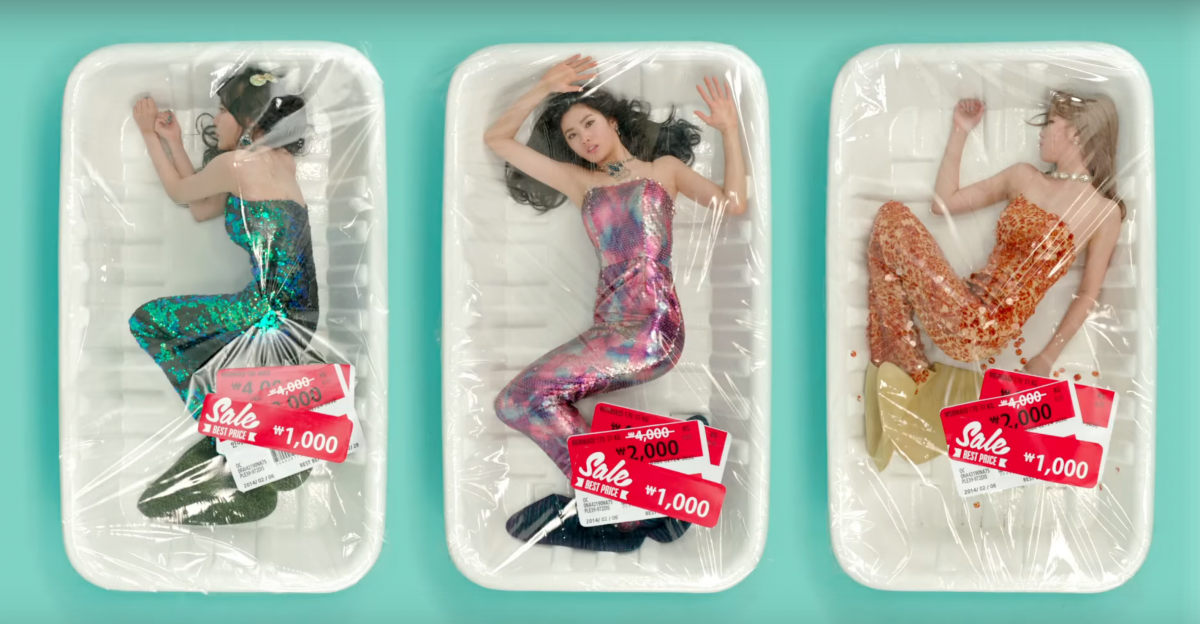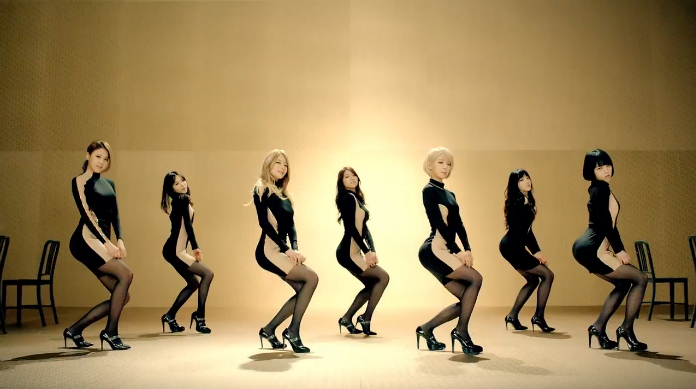Unfit for Broadcast: The Censorship of K-pop Girl Groups (original) (raw)
Memo #401
By: Azalea Lee – azalea [at] mail.ubc.ca

With new K-pop girl groups debuting on a seemingly monthly basis, differentiation between groups is often attempted by pushing the sexual envelope—skirts are getting shorter, lyrics are becoming more suggestive, and choreography more risqué. This overexposure is often flagged and ultimately censored by the organizations that take part in broadcasting censorship—but what exactly do these organizations suppress when they deem girl group performances unfit for broadcast? And what are the aims behind such censorship?
To answer the first question, the broadcasting stations, such as MBC, KBS and SBS, do the majority of the enforcing. Although each of these broadcasting stations have their own guidelines as to what is considered fit or unfit for broadcast, what is censored often revolves around changing minute details in choreography, lyrics, short scenes in music videos, or a combination of the three. With reasons ranging from “indecent exposure” to the “devaluing of human life,” girl groups must change these “unfit” aspects to the broadcasters’ liking in order to be able to perform on music shows. Since these music shows make up a large portion of girl groups’ promotional activities, the vast majority of them comply.
As for the second question, there are multiple avenues that can be explored. First, the censorship could be a means to mitigate the sexualisation, objectification and commodification of these young, female performers. However, changing one or two aspects of any performance does not have a significant impact on the overall atmosphere of the entire performance, and does little to mitigate the larger discourses of objectification.
The Korean Communications Standards Comission (KCSC) and the Korean Ministry of Gender Equality and Family (MOGEF), the two government bodies responsible for broadcasting censorship in Korea, also have specific policies directed at minimizing youth exposure to harmful broadcasting material. Thus, shaping and protecting young minds seems to be another goal of censorship. However, media is not only consumed through television, but through other platforms such as YouTube or SNS, which often escape KCSC and MOGEF’s eyes.
The problem is that the line between the protecting and the policing of women’s bodies and young minds is unclear. The Korean government and broadcasters often use vague, arbitrary and inconsistent measures to govern female performers, giving them the choice of either changing their performance, or not appearing on TV at all.
About the Author:
Azalea Lee is a MA student in the Department of Asian Studies at the University of British Columbia, with a focus on Korean literature and culture.

Scene appearing in girl group Orange Caramel’s music video for hit song Catallena. Deemed unfit for broadcast because considered to be “devaluing human life”. (Source: Pledis Official via YouTube)

Scene taken from AOA’s music video for hit song Miniskirt. Deemed unfit for broadcast because of “unzipping” choreography shown above, which was considered to be “indecent exposure”. (Credit: Soompi)
Links
- “Improvement of Harmful Environment to Youth,” Ministry of Gender Equality and Family, accessed March 27, 2017.
- Lee, Seung-Ah. “Decolonizing Korean Popular Music: The ‘Japanese Color’ Dispute over Trot,” Popular Music and Society (2016): 1-9.
- Kim, Chŏngwŏn, “‘Hey, Look at Me Now, Mister’: An Examination of Visualization and Sexualization of K-Pop Girl Groups in the 2000s,” Korean Journal of Popular Music, 8 (2011): 46-78. (Korean). 김정원 「“Hey 이젠 날 봐봐 Mister” – 2000년대 한국 걸그룹의 시각화(visualization)와 성애화(sexualization)에 관한 고찰」『대중음악 통권』 8호 (2011): 46-78.
- Kim, Yeran. “Idol republic: The global emergence of girl industries and the commercialization of girl bodies,” Journal of Gender Studies 20, no. 4 (2011): 333-345.
- Saeji, Cedarbough T. “Juvenile protection and sexual objectification: analysis of the performance: Analysis of the performance frame in Korean music television broadcasts,” Acta Koreana 16, no. 2 (2013): 329.
- “Subject of Report,” Korean Communications Standards Commission, accessed March 27, 2017.
Related Memos:
See our other memos on South Korea.